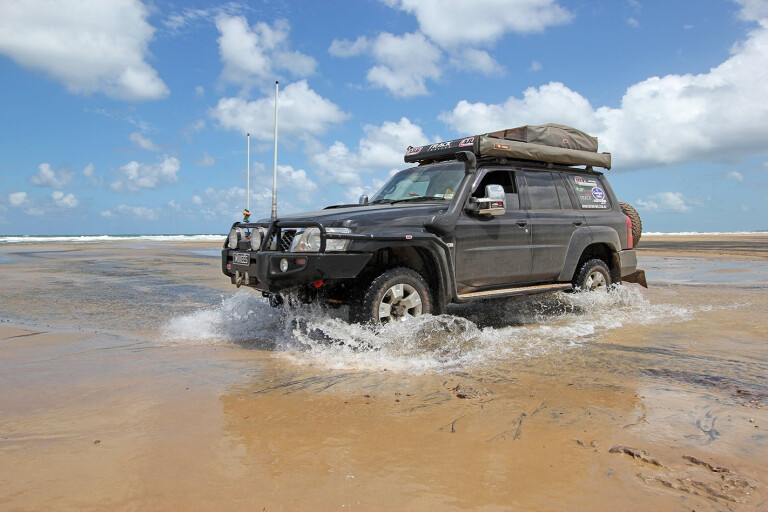
FOR many, building the ultimate tourer is a gradual process. It requires long hours spent in the shed and a progressive flow of money to fund all those aftermarket goodies.
This article was first published in 4x4 Australia's May 2012 issue.
Our modification journey was no different, although a decision to cut loose from work and spend a year travelling around the country compressed the time frame a tad. The foundation for the project was a 2005 Nissan Patrol wagon powered by the ZD30 direct-injection 3.0-litre turbo-diesel engine.
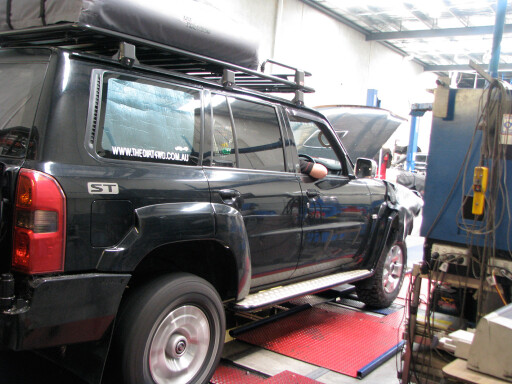 Despite being a little dated in design, the Patrol is a great long-distance tourer or weekend warrior, with generous family proportions, rugged underpinnings and the availability of plenty of aftermarket kit. The ZD30 mill powering the bulk of the GU Series does an admirable job of lugging all that weight around, even in standard trim.
Despite being a little dated in design, the Patrol is a great long-distance tourer or weekend warrior, with generous family proportions, rugged underpinnings and the availability of plenty of aftermarket kit. The ZD30 mill powering the bulk of the GU Series does an admirable job of lugging all that weight around, even in standard trim.
The trick is knowing how to enhance the performance without compromising the long-term ownership potential. In the search for a reputable performance workshop for the job, I contacted Ray Miller at Turbo Engineering in Melbourne, who has been working on performance dyno tuning for 38 years.
The initial way to tickle up the performance is to fit an aftermarket performance chip; yet few have the skills and tools necessary to fine tune or remap the chip to suit specific modifications. A dyno run was performed to check the stats against manufacturer claims and to use as a base for comparison.
The first area of concern was boost management, with the dyno showing boost spikes up to 24psi. The ZD30 has a reputation for boost spikes which the engine management system is slow to control, particularly after bolt-on performance additions.
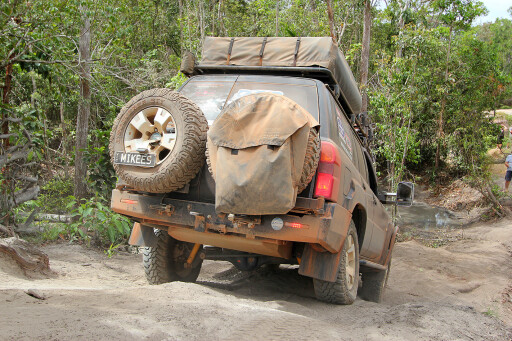 Ray fitted a manual system, which presets the boost to a maximum 18psi. This provides a more linear boost curve which improves performance and manages exhaust and cylinder temperatures. To monitor the vital signs, exhaust gas temperature (EGT) and boost gauges were fitted.
Ray fitted a manual system, which presets the boost to a maximum 18psi. This provides a more linear boost curve which improves performance and manages exhaust and cylinder temperatures. To monitor the vital signs, exhaust gas temperature (EGT) and boost gauges were fitted.
EGT readings are critical; with 550-600°C the maximum recognised safe operating temperature for this motor. While the Dtronic chip adds more fuel, a Taipan XP three-inch, mandrel-bent system helps the engine breathe. In some models, the dump pipe gains a ceramic coating to keep super-heated exhaust gases out of the engine bay, leading to better combustion.
A high-flow cat, Vortex muffler and rear resonator ensure the spent gases exit quickly without creating excessive droning. Back on the dyno, Ray remapped the chip to match our modifications. Power and torque lifted across the rev range, with the biggest gains down low. He’s still not happy.
Ray explained he normally gets a much bigger bow in the performance gains, blaming suspect injectors for the low fuel-flow rate. With new injectors fitted, a subsequent run on the dyno and a tweak with the laptop yielded a further eight kilowatts at the rear wheels and 91Nm. Higher numbers are achievable with a better flowing air filter, but I’m happy with the finer weave of the genuine filters.
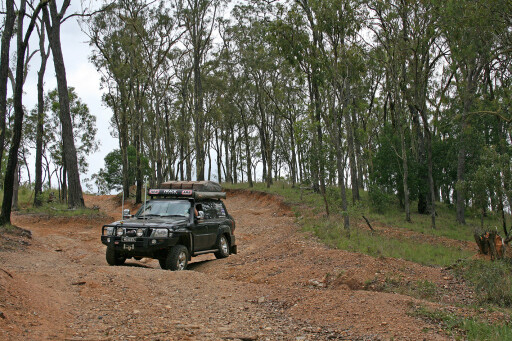 A Safari snorkel with ram air mount draws cleaner air from up high. Nissan’s tiny air-to-air intercooler was replaced with a substantially larger Cross Country 4x4 unit that uses a quality PWR core and laser-cut components, with smooth tig welds inside and out.
A Safari snorkel with ram air mount draws cleaner air from up high. Nissan’s tiny air-to-air intercooler was replaced with a substantially larger Cross Country 4x4 unit that uses a quality PWR core and laser-cut components, with smooth tig welds inside and out.
The bigger intercooler adds a claimed surface area gain of 80 percent and a flow area gain of 150 percent. A 10-inch underslung fan draws cool air through the bonnet scoop and intercooler, reducing plenum temperatures by a claimed 100°C. The fan runs all the time, although a temperature probe is built into the core to option a temperature switch if desired.
Out on the road, performance improvements are significant, particularly with our Track Trailer Topaz off-road van in tow. Turbo lag is reduced, spooling up much quicker. Second gear sees a pleasing surge of power that keeps on coming as you row through the gears.
It’s amazing what an extra 16kW and 169Nm at the rear wheels can do for towing performance, particularly considering it’s lugging around a gross combined mass of around 5.8 tonnes.
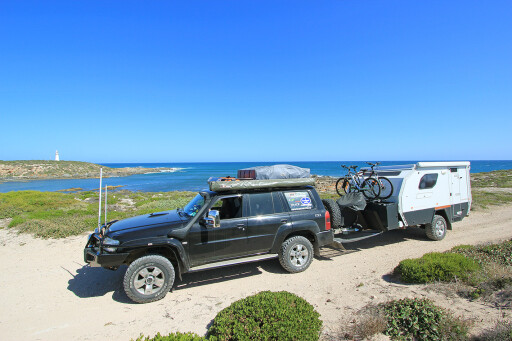 Peak power and torque gains aside, the real story is where those numbers come into play, with the dyno results showing low-down power and torque up by 80 percent and mid-range up by 34 percent; ideal for towing duties.
Peak power and torque gains aside, the real story is where those numbers come into play, with the dyno results showing low-down power and torque up by 80 percent and mid-range up by 34 percent; ideal for towing duties.
A Provent 200 air-oil filter protects the mass airflow sensor from being coated in oil mist, courtesy of the crankcase baffle, which can skew readings affecting air and fuel ratios. A Redarc Low Coolant Alarm is plumbed into the top of the radiator, emitting a warning alarm if the pin loses contact with the coolant.
With the damage that loss of coolant can cause, I’m surprised these low-cost units ($182 plus fitting) aren’t fitted in all vehicles. A dual-battery system featuring an Optima D27F and Orbital battery works hand-in-hand to power the electrics. A maintains the second battery at 100 percent charge via a three-stage charging system.
It also isolates the second battery from the starter, ensuring there are always plenty of amps available at cranking time. The boys at Elizabeth Auto Electrics fitted the charger with heat-shielding chequerplate. The circuit was modified with a momentary switch, facilitating jump-start and winching assistance using both batteries.
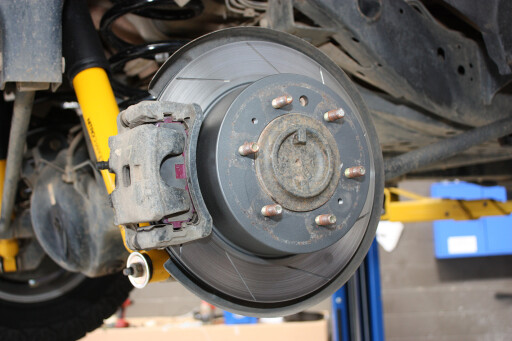 Due to the added weight of the new touring accessories, a set of DBA 4x4 Survival slotted rotors mated with genuine Nissan pads were fitted. These rotors are specifically designed for 4X4 applications and towing heavy loads with an improved ventilation design.
Due to the added weight of the new touring accessories, a set of DBA 4x4 Survival slotted rotors mated with genuine Nissan pads were fitted. These rotors are specifically designed for 4X4 applications and towing heavy loads with an improved ventilation design.
The rears are not interchangeable, but a quality, softer aftermarket pad is the best option. Outback, a colour-coded Kaymar rear bar and dual-wheel carrier take care of protective duties, providing an integrated 3.5-tonne tow bar, work light and LED tail lights.
The bar is a single piece unit, maximising strength and minimising vibration. Complementing the rear bar, ARB colour-coded bar-work adorns the front and sides of the truck. A Warn 12,000lb winch sits up front, called into duty on the rare occasions the Maxtrax needs assistance.
An ARB high-performance wiring loom provides plenty of current for the upgraded IPF 170/100W high/low bulbs. However, the serious illumination happens on high beam, when the IPF900 Extreme Sport HIDs are called into action. With dual-spread beams, these deliver an intense spread of white light.
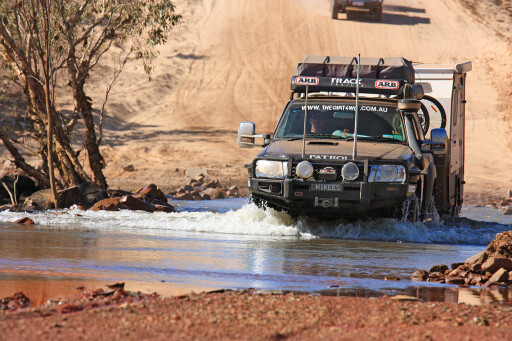 A Long Ranger 145-litre main tank replaces the Patrol’s 95-litre, extending the touring range. If needed, a further 80 litres can be carried on the Topaz in jerry cans. ARB Old Man Emu (OME) Nitrocharger Sport coils and shock absorbers keep everything in shape while providing a 50mm lift.
A Long Ranger 145-litre main tank replaces the Patrol’s 95-litre, extending the touring range. If needed, a further 80 litres can be carried on the Topaz in jerry cans. ARB Old Man Emu (OME) Nitrocharger Sport coils and shock absorbers keep everything in shape while providing a 50mm lift.
A pair of heavy-duty 400kg constant-load coils was specified for the rear, and heavy-duty coils for the front. The coils are matched to Nitrocharger Sport shock absorbers. A steering damper, castor-correction kit and wheel alignment complete the suspension fit-out.
Signifying the importance of buying a fully-engineered suspension system, the OME kit flexes well off-road, as well as providing superior load-carrying capabilities. On ARB’s recommendation, a visit to ATOC Auto in Melbourne helped reinforce the rear coil seats, a known weakness in GQ/GU Series Patrols.
Vehicles subject to high load conditions are particularly vulnerable; the ATOC kit is a great preventative measure. A set of Cooper STTs matched to 17-inch Nissan alloys on both the truck and the Topaz keep the ship on course.
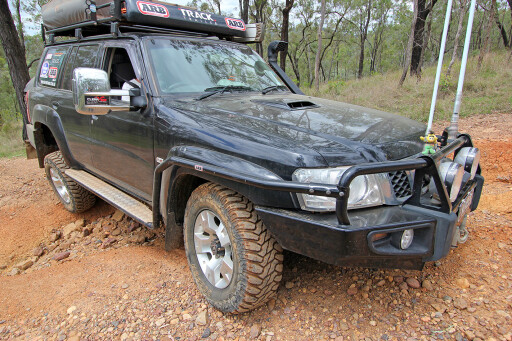 The STTs’ three-ply sidewall, good blacktop performance and excellent grip off-road, without resorting to a Centipede-style grip, deliver the goods with all the traits of a tough touring tyre. An R&R Beadbreaker tool is carried to assist with tyre repairs but, in testament to the quality of the STTs, hasn’t been required.
The STTs’ three-ply sidewall, good blacktop performance and excellent grip off-road, without resorting to a Centipede-style grip, deliver the goods with all the traits of a tough touring tyre. An R&R Beadbreaker tool is carried to assist with tyre repairs but, in testament to the quality of the STTs, hasn’t been required.
On the rare occasion the ruts exceed wheel travel, an ARB high-flow air compressor activates the ARB front Air Locker, to work in tandem with the Patrol’s limited rear slipper, to keep the wheels turning while maintaining forward progress. A portable ARB twin-motor compressor assists with tyre inflation.
Clearview mirrors replace the Patrol’s standard fare, dwarfing them by comparison and providing an impressive view of what’s happening behind. They also fold parallel to the vehicle for tight tracks. All eight seats have been turfed to maximise comfort and storage potential.
The front buckets were replaced with a pair of Stratos pews. Anita’s dodgy back has scored her a 3000 LTSS suspension seat, which massages out any vibration and bumps transferred through the truck’s ride. I settled with a 3000 LS Sports seat with body-hugging bolstering and seat base extension, perfectly complemented by the Stratos seat rails, which slide back much further than standard.
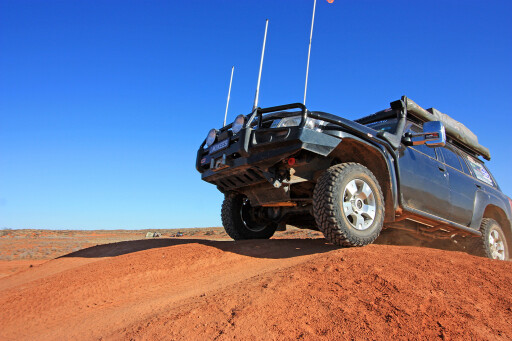 A Redarc remote-head brake controller fits neatly behind the dash, leaving only a small knob installed in a switch blank; a much better solution than those other bulky units which only intrude on cabin space. You can alter the braking severity on the move via the adjusting knob or apply the brakes independently of the towing vehicle, eliminating trailer sway.
A Redarc remote-head brake controller fits neatly behind the dash, leaving only a small knob installed in a switch blank; a much better solution than those other bulky units which only intrude on cabin space. You can alter the braking severity on the move via the adjusting knob or apply the brakes independently of the towing vehicle, eliminating trailer sway.
An ECUTalk Consult LCD display is fitted on the centre console. This diagnostic and monitoring tool for Nissan vehicles reads values from the vehicle’s ECU. The reading I pay closest attention to when towing is the coolant temperature, particularly considering the standard temperature gauge never moves.
Using the user-definable alarms, I’ve set an alarm on the coolant temperature readout at 99°C. With the boiling point of coolant around 116°C, there’s still some room above the alarm, although I’d be looking for a place to pull over and take a rest if it ever sounded.
As far as the engine error code reading, I’ve only had to clear it once and that was during extreme testing and not within the bounds of normal use. Still, it’s a great feature to be able to read, translate and clear without going to a dealer. Another inexpensive but incredibly useful tool (around $230 and easily fitted).
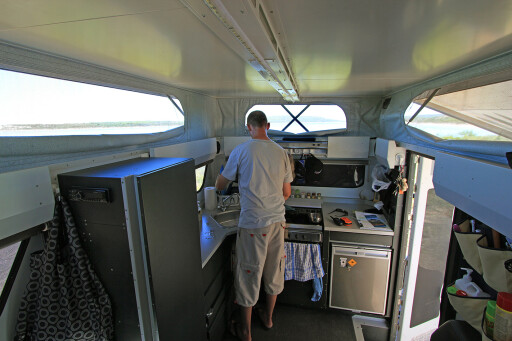 In the rear, an Outback Storage system with floor extension and front-mounted barrier allows the fitment of a 78-litre ARB fridge/freezer in the rear and stackable boxes elsewhere, restrained by Outback’s cargo tie-down points. The no-tools design of the front-mounted barrier is a winner, with easy removal to stow long items.
In the rear, an Outback Storage system with floor extension and front-mounted barrier allows the fitment of a 78-litre ARB fridge/freezer in the rear and stackable boxes elsewhere, restrained by Outback’s cargo tie-down points. The no-tools design of the front-mounted barrier is a winner, with easy removal to stow long items.
Just unwind the hand-operated dials to remove the barrier. Beneath the floor extension, heavy recovery gear and tool boxes are secured, keeping a low centre of gravity, as well as storing other valuables out of sight.
An ARB Touring roof-rack sits up top, sporting a Foxwing awning, ARB Simpson III rooftop tent and Maxtrax affixed with the new keyhole mounting kit. Communications are managed through a GME TX4500 UHF radio mounted in an Outback roof console, fitted with LED cabin lighting, map-reading lights and a handy map locker.
With the UHF speaker mounted up high in the roof console, transmissions are much clearer, especially during high-speed off-road excursions. A GME AE4705 6.6dBi high-gain aerial graces the bullbar to extend the communication range out in the desert, while an AE4013 2.1dBi aerial mounts to the same spring base for improved performance in mountainous terrain.
 A GME AT6DB 6.1 dBi mobile mast and an Iridium 9555 provides a communications option outside the mobile network. While touring, a Spot Satellite Tracker pings our location via satellite every 10 minutes so family and friends can keep up with us via a link to Google Maps.
A GME AT6DB 6.1 dBi mobile mast and an Iridium 9555 provides a communications option outside the mobile network. While touring, a Spot Satellite Tracker pings our location via satellite every 10 minutes so family and friends can keep up with us via a link to Google Maps.
An in-dash VMS Touring 7506 keeps us on course with OziExplorer, Mud Map and Moving Map applications. The VMS system has iPod connectivity, integrated Bluetooth for phones, AM/FM radio, MP3 Player/USB support and a CD/DVD player – all wrapped up with a touch-screen display.
Dual VMS reversing cameras provide a view of what’s happening behind. An iPad supplements navigational needs, its 10-inch screen providing additional real estate to view the maps. With our 12-month trip now complete, it is hard to digest all the amazing places we visited and all the good bits of gear that made touring that much more pleasurable.
Nailing a favourite accessory is a much harder task, as everything adds value in some way. However, we’d highly recommend all these upgrades from all the above aftermarket suppliers.

COMMENTS